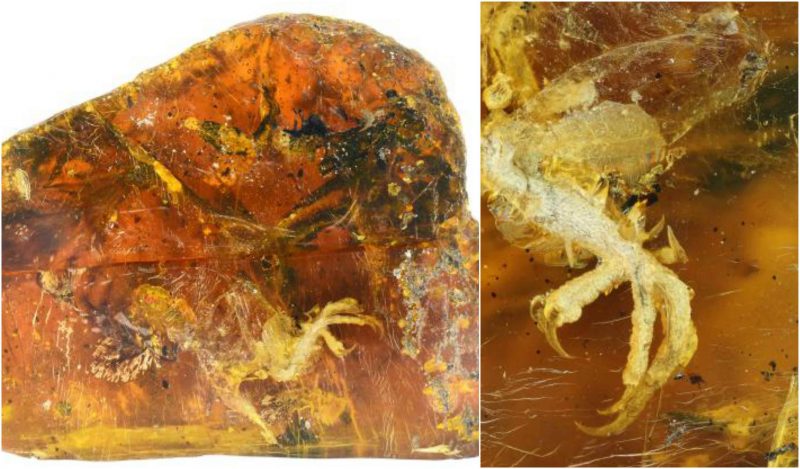There were times when amber was more precious than gold, though that’s not the case today. But hold that thought, as some recent scientific discoveries will make you reconsider what value you ascribe to amber.
Researchers have come across a monumental discovery trapped inside a piece of Burmese amber. Containing the head, neck, as well as the wings and tail, the specimen is that of a remarkably complete body of a 100-million-year-old bird. Most probably, the bird was just a couple of days old when it fell into sap that then turned to amber, trapping it inside for eternity.
Baby “opposite bird” preserved in 100 million year old amber https://t.co/ypU9RROb8Q pic.twitter.com/m782OQIJOo
— science (@science) June 9, 2017
Despite the actual skin and flesh of the little ancient creature being seemingly well preserved in the chunk of amber, it is actually a detailed impression of what it once was. Similar studies have pointed out that the flesh, despite being locked and shielded from the atmosphere, has been broken down into carbon, which means there is no surviving DNA for further analysis. However, the scientists will most certainly use the specimen to create a 3-D model of the ancient bird and learn more about its unique features.
Team member Ryan McKellar of the Royal Saskatchewan Museum in Canada, sharing the excitement, says, “It’s the most complete and detailed view we’ve ever had.” McKellar believes that the bird hatched on the ground, and then proceeded to move up into the trees. That would have made it more likely that it would get trapped, as is the case with the freshly found specimen.
The bird belongs to the enantiornithine group of extinct avians, and it was just beginning to develop its tail feathers when it was locked into the chunk of amber. The enantiornithines resemble distant ancestors of modern birds, but they disappeared from the historical record at the same moment as the dinosaurs did, some 66 million years ago.
The enantiornithines are thought to have once been the most abundant and diverse group that lived in the Mesozoic era. The extinct species has been found on each continent, except for Antarctica. Their extensive distribution suggests that at least some of them were capable of crossing oceans on their own. The earliest known specimens have been so far identified in Spain and China, dating back to the Early Cretaceous, while the latest ones are those found across the Americas, dated back to the Late Cretaceous.
While enantiornithines were closely related to modern-day birds, they still retained some unique characteristics, such as the absence of a beak. They had teeth, and claws on their wings, too.
Prior to this discovery, scientists also reported finding two more remarkably preserved bird wings, again in amber fossils, thought to belong to the same group. The fossilized wings were as tiny at only three centimeters in length. However, they showcased the skin, the muscles and feather shafts in splendid details. The samples were initially purchased at a market in Myanmar, a region famed for its bounty of amber fossils.
Most complete ancient bird ever found: A specimen of a dinosaur-era baby bird trapped in a 99-million-year-old amber is released in Beijing pic.twitter.com/d8QpeYB5JH
— People’s Daily,China (@PDChina) June 8, 2017
While the mining and sale of Burmese amber are not under some strict regulation at the moment, it is reported that many such items end up being sold to Chinese customers. Then, instead of placing them in a research lab, the purchasers reportedly value them as pieces of jewelry and decorative pieces.
WOW! Look at the feathers on this Cretaceous bird preserved in amber! https://t.co/q0VMplchgH@macroevolut might want to get his mits on it! pic.twitter.com/0S3cwDSoqn
— Thomas Clements (@Thomas_Clements) June 7, 2017
Additional examination has shown that the amber chunk containing the wings was probably part of a larger chunk that maybe held the rest of the bird’s remnants.
These ancient birds were well advanced in their development and set for the business of flying and surviving as soon as they were hatched. According to scientists, instead of waiting in their nests to be fed by their mother, the birds probably went on the look-out for food on their own soon after hatching. Sadly, these fighters trapped in the amber sacks were so small and, lacking the proper experience, their lives ended too soon.
However, the knowledge they bring from a long ago period is exciting, as is the insight into the mind-boggling maze of history that we as humans can only wonder about.
